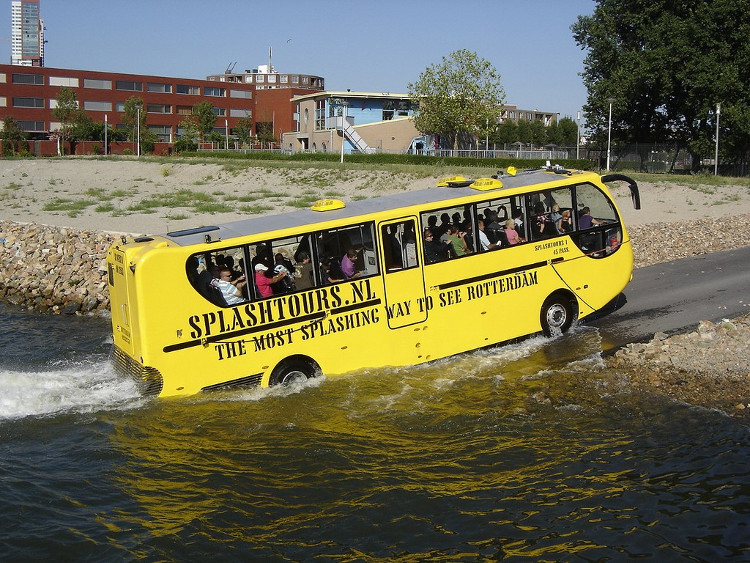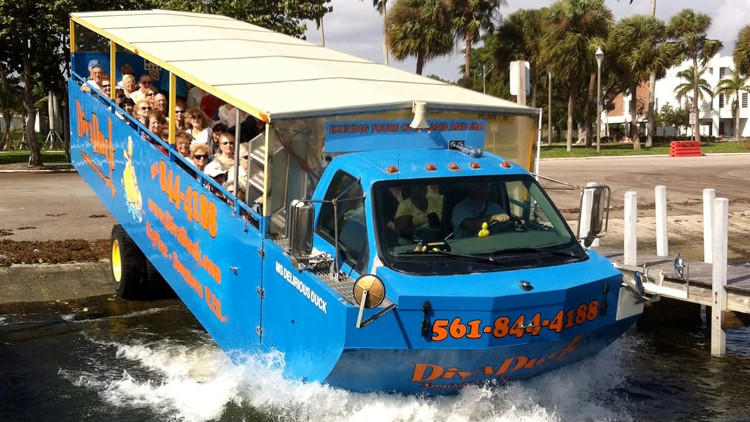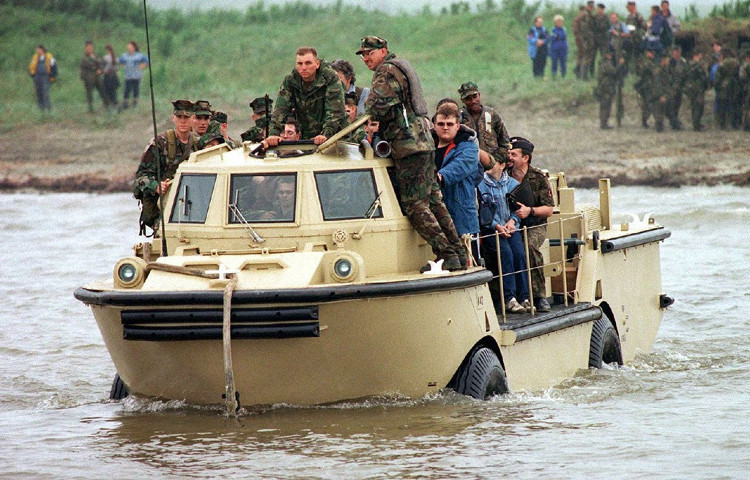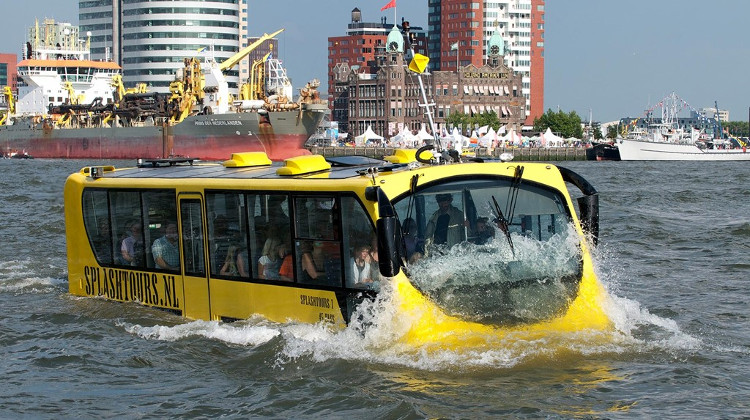How does the bus in the river work?
Buses on the river have similar operating principles to conventional types when traveling on land. However, when entering the water, the car turned into a motorboat.

Buses on the river are used by many countries around the world but mainly for tourism.This is a special type of transport that can operate both on land and underwater.(Photo: ALK3R).

Buses on the river give visitors a feeling of excitement thanks to mobility.During a tour, visitors can sit on the spot watching beautiful sights in the city but easily across the river or across the strait to experience the feeling of traveling.(Photo: RampSplash).

Amphibious buses have been used since before the Second World War, and are widely used on military equipment.Today, water buses are used by many countries around the world such as Japan, Korea, Dubai, UK, Singapore . (Photo: Wikimedia).

Safety standards of amphibious buses are closely monitored by road and river management agencies.The driver of an underwater bus by driving a car according to regulations must also learn to control the boat.(Photo: Splashtours).

Amphibious buses are closed to the lower body.The wheels and chassis are covered to avoid water entering the cabin.Vehicles can swim even in freshwater environments such as waterways or saltwater when crossing the straits.Each car can carry 46-55 passengers.

The tires are made of 6-12mm thick aluminum or 3-6mm thick stainless steel, which can stabilize the body when floating.Bottom-body design consists of partitions and helps the bus not sink.In the case of a puncture hole inside, the car can still be balanced and float on the water.Each compartment has a water pumping system or can insert foam according to customer requirements.Water buses are considered one of the safest passenger transports in the world.(Photo: Carnival).

When operating on land, the engine transmits power to the wheels and acts as a regular street bus.However, when getting into the water, energy is transferred through the propeller to push the car forward.The steering system is also shifted from turning the wheel to the front steering wheel to divert.(Photo: Thach Lam).

Around the world, many countries use amphibious buses to transport tourists but mainly serve tourism activities.For example, in Dubai, the water bus service is called the Wonder Bus.This vehicle is imported from the United States and can carry 48 passengers.(Photo: Tabeer Tourism).

In the UK, the water bus service, London Duck Tours, uses duck-shaped buses that run on the Thames.(Photo: Londonducktours).

In Singapore, Duck & Hippo Tours uses large wheel buses, convertibles, which can cross the bay or strait, and travel on the streets.The price for a day trip by amphibious car in Singapore is about 40 SGD (640,000 VND).(Photo: Singgapore Duke Tours).

Over the years, thanks to the advancement of science and technology, buses running under water have cheaper prices and higher speeds.Vehicles can run about 15km / h when traveling underwater and 140km / h when running on land.Fuel consumption is also reduced and higher safety standards.However, in the world, not many countries see buses running in the water like public transport, but only transport means.(Photo: Dubaileisureholidays).
- Confluent rivers are not suitable for color matching
- Marvel at the source of the 10 great rivers in the world
- The river has two colors of water mixed in Brazil
- The campaign hunts for black, stinking rivers in China
- Mysterious world deepest river
- The new discovery helps the Amazon River become the world's longest river
- Listed 10 longest rivers in the world
- Chinese people are crazy about the dragon river
- The river turning blood red made the Russians fear
- Terrified because the river changed color, red like blood in Russia
- Vam Nao and the interesting anecdote about the 5-legged crocodile
- The Yangtze River water turns red
 'Fine laughs' - Scary and painful torture in ancient times
'Fine laughs' - Scary and painful torture in ancient times The sequence of numbers 142857 of the Egyptian pyramids is known as the strangest number in the world - Why?
The sequence of numbers 142857 of the Egyptian pyramids is known as the strangest number in the world - Why? History of the iron
History of the iron What is alum?
What is alum?